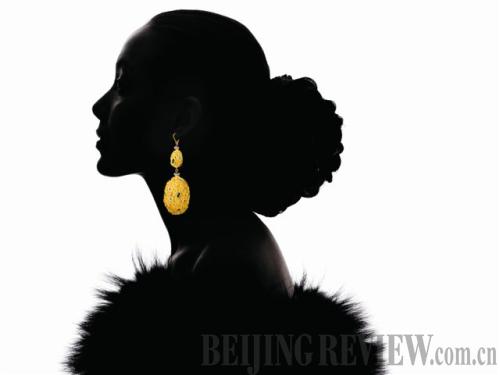|
 |
|
NEW MISSION: Gold jewelry is being creatively marketed in China (COURTESY OF ANGLOGOLD ASHANTI) |
These days, when asked about wearing gold jewelry, many young Chinese women would say, "Gold is worn by my mother and aunties, not by a young lady like me!"
The reason is simple: the concept of gold as the ultimate consumer item has been pushed aside, as young people have a wide range of choices nowadays, from cosmetics and perfume, the latest mobile phones and spa treatments to overseas holidays.
However, Desmond Pun, Chief Representative of AngloGold Ashanti's Beijing Office, believes gold lost its glamor on the Chinese market mainly due to dull and old-fashion designs.
This situation has changed since AngloGold Ashanti's AuDITIONS, a popular gold jewelry design competition, came to China in 2006.
Headquartered in Johannesburg, South Africa, AngloGold Ashanti, a leading global gold producer, accounts for 10 percent of the world's production. Gold exploration and acquisition are its major businesses in China, with another focuse being promotion of gold jewelry design through events like AuDITIONS, according to Pun.
"I firmly believe with the experience and resources we have, we are able to bring about trendsetting designs, and modernize the gold jewelry market," Pun told ChinAfrica. "AuDITIONS is the best example."
Hailed as the Oscars of worldwide gold jewelry design, AuDITIONS has been hosted in India, South Africa, Brazil and the Middle East. After two successful competitions in China in 2006 and 2008, AngloGold Ashanti, in collaboration with the World Gold Council (WGC), is currently holding the third AuDITIONS China.
Pun said that the competition is open to all designers, including college students, amateur and professional designers from within jewelry and other industries. More importantly, it recognizes and motivates latent talent to create original jewelry, which in turn stimulates interest in gold jewelry in the world's second largest gold market.
Trendy and traditional
China attracts so much attention in the gold jewelry industry, because within Chinese culture, there is a centuries-old fondness of gold, combined with the fact that jewelry design in the country remains relatively undeveloped.
In ancient China, gold locks were a traditional gift for a newborn baby to symbolize lifelong happiness. And gold jewelry has long been considered an indispensable adornment for the bride and the most felicitous wedding gift.
In recent times, gold lost its glamor largely because contemporary jewelry design in China is still in its infancy, inhibiting growth in gold consumption, Pun explained.
As part of its marketing program, AngloGold Ashanti has been involved in establishing, organizing and sponsoring gold jewelry competitions over the years. These events have encouraged original and striking designs.
"That's a powerful tool for the company's ongoing promotion of its product," he said. "It will benefit not only our business here, but the whole gold industry if the Chinese market is better developed."
Although Chinese designers have not yet succeeded in making each piece of gold jewelry a must-have treasure for consumers, the industry appears certain to grow, given the increasing market demand.
Between April-June, demand in China reached 111.7 tons, up 26 percent year on year, making it the second largest consumer market for gold worldwide after India, according to WGC. It noted that China's demand for gold has increased 13 percent on an annual average basis over the past five years.
China has been the world's largest gold producer since 2007. It "produced 461.9 tons of gold last year, an increase of 7 percent compared with 2008, despite the financial crisis, about 75 percent of which was used in jewelry," said Albert Cheng, Managing Director of WGC Far East.
|